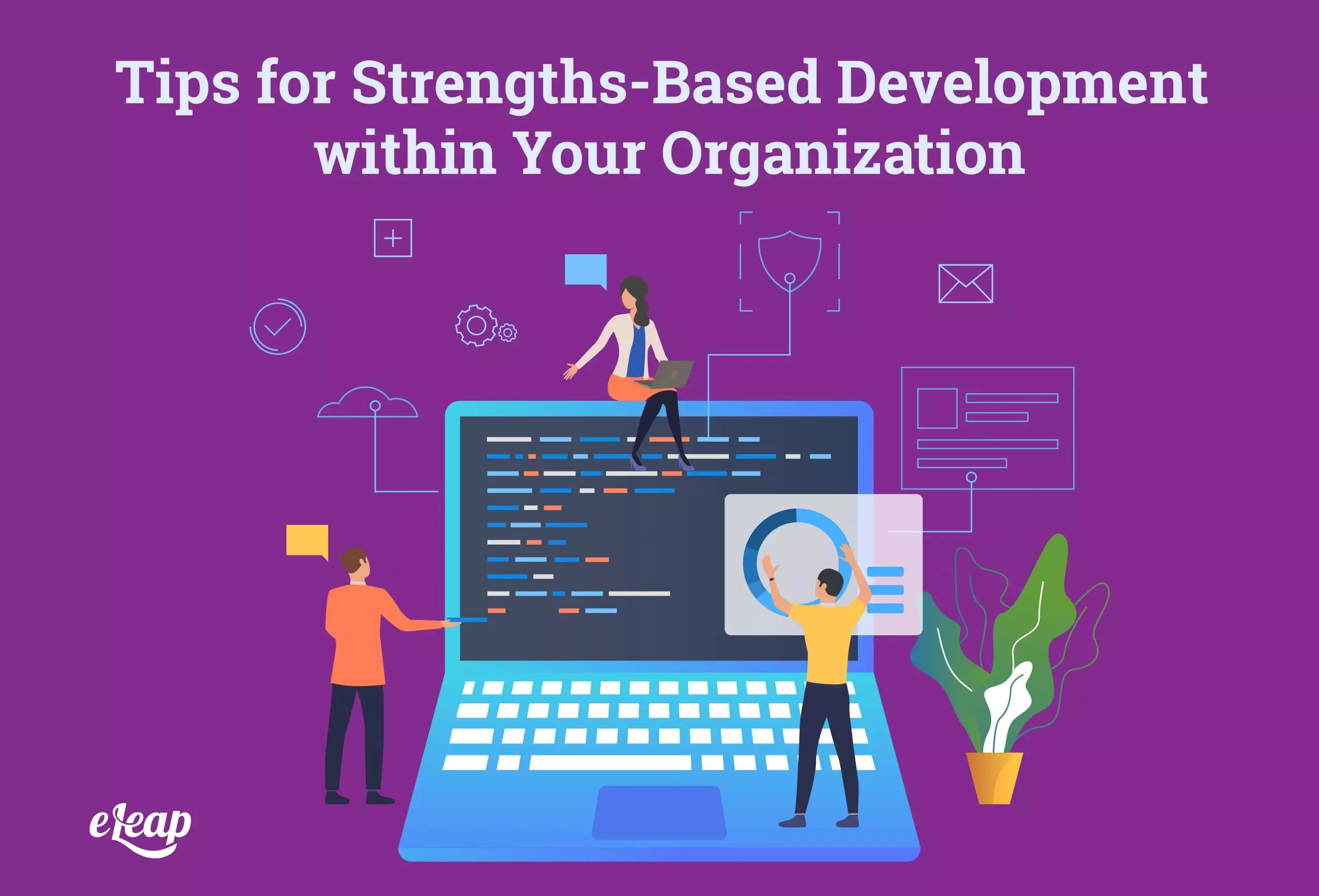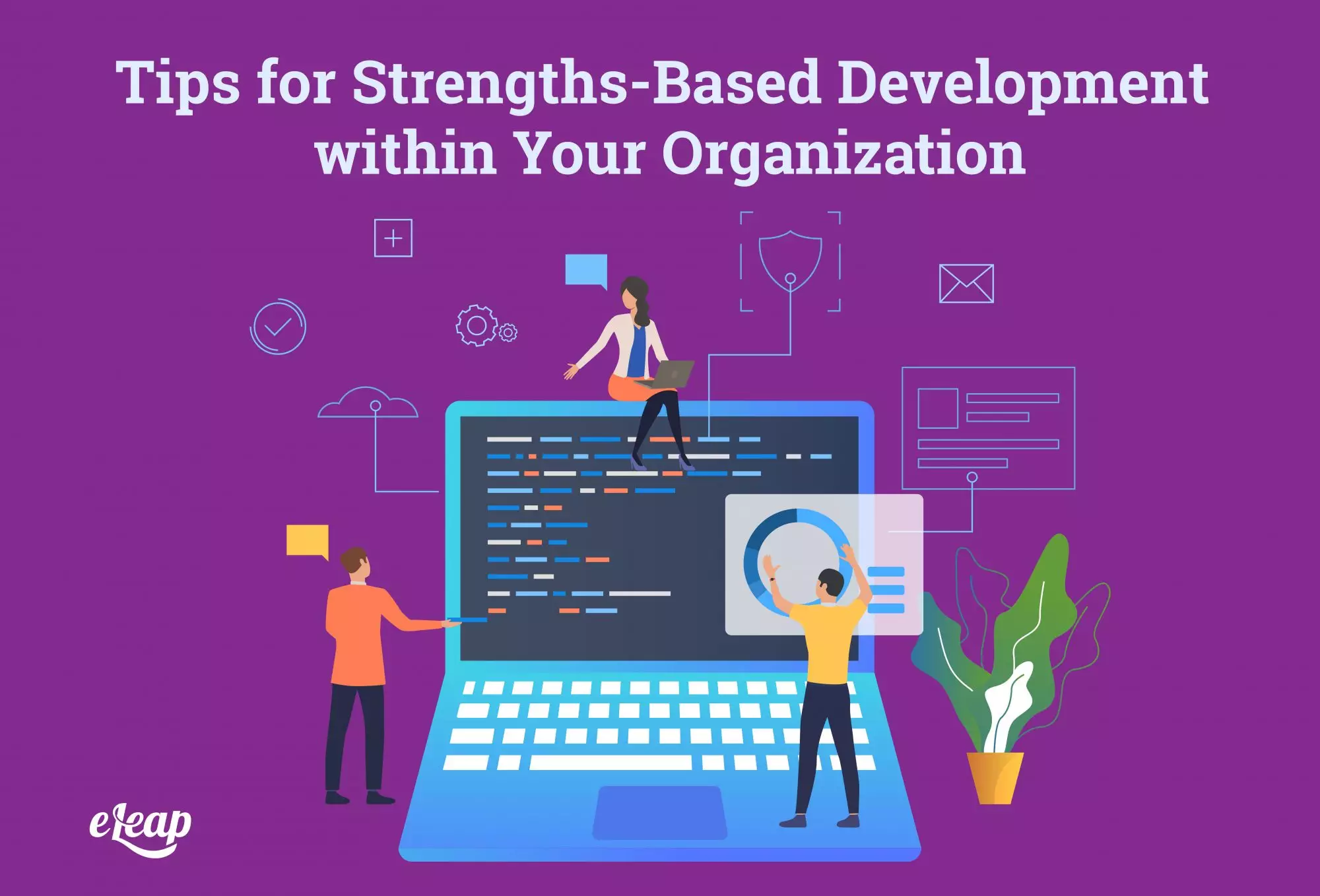Tips for Strengths-Based Development within Your Organization

In the traditional organization, employees are coached based on their weaknesses. For instance, if someone excels while working solo, but struggles in a team-based environment, the coach would tell them they need to build their soft skills, like teamwork. While that’s not untrue, the method fails when it comes to building successful teams. A strengths-based development approach calls for organizations to rethink this process in favor working with employees based on their strengths not their weakness.
Today, more and more organizations are taking a strengths-based approach and reaping the benefits. What is strengths-based development and how can you build it into your company? We’ll tackle those questions and more in this post.

What Is Strengths-Based Development?
Let’s start by exploring what strengths-based development is. This is nothing more than helping your employees identify their strong areas and then determine ways to match those strengths to specific tasks within the organization. Here are our top coaching courses.
This results in a much better fit than simply assuming that any employee can be hammered into any position with the right training and performance management practices. It’s the old square peg/round hole conundrum. Strengths-based development helps ensure that your square pegs go into square holes and round pegs go into round holes.
So, given that explanation, how do you go about this? We have several important tips that will help ensure your success.
Identify Strengths
This tip is probably a no-brainer, but we’re going to start here. You need to identify the employee’s strengths before you can offer any sort of development or training. There are several ways you can do this, including simply flat out asking the employee what they feel they are strongest at.
However, many people may be hesitant to provide an accurate answer, or they might not be sure themselves. In this instance, you can ask coworkers and team members what they feel are the employee’s strengths, and ask managers/team leaders for their opinions. Based on multiple sources of information, you can then make informed decisions and begin connecting the dots.
Teach Them How to Use Their Strengths
It’s easy to assume that, if you have a strength, then you automatically know how to use that strength. Sadly, this isn’t always the case. In fact, most people don’t know how to put their strengths to work within the organization. A strengths-based development strategy will tease out these hidden strengths that folks don’t know or think they have.
In these situations, it becomes your responsibility to help them learn how. You’ll need to teach them how to put their strengths to use. Your LMS can be an invaluable tool here, but you’ll need to ensure that your content is designed to help employees see how their strengths and the strengths of others dovetail and complement each other.
Help Avoid the Focus on Weakness
Often, employees tend to focus on their weaknesses. This is natural. They feel that these are weak points that make them targets for management. The thinking is something along the lines of “If I don’t do X, then they’re going to find someone else for the position”. It’s a holdover from the old-school, punitive method of management.
The problem here is that when employees focus on their weaknesses, they tend to ignore their strengths. They end up with a one-track mind that short circuits success. It’s your job to help them avoid that focus and, instead, to refocus on what they do best. When you’re able to do this, employees will feel more confident, more engaged, and more essential to the organization, thus safer from punitive actions that might stem from a perceived weakness.
Mix and Match
The next tip is another no-brainer, or at least it should be. However, despite the commonsense nature, many decision-makers fail to act here. The tip is this: make sure to match employees’ strengths to their tasks.
The reason many decision-makers fail to follow through is simple – there’s a degree of trial and error here. Managers don’t like to be seen in that light or to take the time to shuffle people around several times to find the right fit. However, as you move employees around, you (and they) will get a better feel for their strengths and then you can start grouping employees with similar strengths together to form teams.
Show Value to Others
Recognition is a big thing. It ties into autonomy and accountability, engagement, and even employee retention. However, when you recognize the value of an employee’s strengths publicly, you also tell everyone else in the organization that those qualities are important, but also that the individual possesses those strengths in the first place. Spread that idea around to everyone in the organization and you’re able to create a stronger foundation on which to build success.
Work on Your Culture
None of the tips above will do much good if you’re not starting from the right place. If you’re just giving lip service to the idea of strengths-based development, your efforts are going to fail. It’s critical to create a strengths-based culture to go hand-in-hand with your development efforts.
What does a strengths-based culture look like, though? Here are some qualities to look for that indicate you’re on the right track:
- Your employees come to work because they have a purpose, not because they want to earn a paycheck. Yes, pay is important, but without purpose, work is ultimately meaningless.
- Development leads to greater personal and professional satisfaction and is tied to individual strengths.
- Your managers are committed to coaching team members, not “being a boss”.
- You focus on conversations and check-ins rather than on annual or twice-yearly reviews.
- Your team members and managers build lasting, strong relationships with one another. Work is more than “just a job” – it’s a valued part of everyone’s life.
How Strong Is Your Team?
There you have them – critical tips to help put strengths-based development to work within your business. As you can see, it ties in directly with modern performance management (learning and development and performance management are two sides of the same coin, after all). With the right focus, the realization that today’s employees want much more than those of yesteryear, and the understanding that real change begins with your company culture, you can achieve great things.